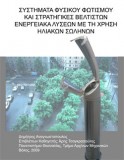Supervisor:
Architectural Design
2009
Daylighting has always been a major factor in building design. The individual’s need for natural light has not been substituted by the exclusive use of artificial lighting. Today, the developments regarding new material and innovative daylighting systems have offered better use of natural light and greater flexibility for that matter. The man’s need for light has been explained through various theories like the one of biophilia which suggests that man’s tendency towards nature is imposed by his genetic development.
Some clear cut benefits of daylight is energy savings, health benefits, vast visual specter, better performance concerning indoor activities e.t.c. Among the downsides we have to include the sometimes discomforting glaze and the need for adjustment by the occupants for better visual comfort.
The most common daylight systems are windows on the outer walls, light reflectors, light selves, skylights, clerestory windows, prismatic blinds, optical fibers, and finally light pipes. In any case there should precede a study of the climatic and natural factors involved.
The idea of a light pipe was introduced by ancient Egyptians, but the first commercial use was rather recent, 1991. The basic principal behind its function is this, a circular tube covered inside by a highly reflective material leads the sun beams in the interior of a building, starting from a specific entrance point located on the building’s roof or one of the outer walls.
Until now, sun pipes have been applied in many great buildings like the Apple Headquarters in London, the Morgan Lewis International Headquarters in Washingto D.C., the Potsdamer Platz station in Berlin, the Headquarters Borusan Group in Istanbul, and the british school in Al-Khubairat ofAbu Dhabi. Among the manufacturers is Monodraught, EcoLight, Veluxand Sunscoop.
Solar Tubes consist of three parts, a light transfer guide connected to a sun tracker on its outer end and a diffuser in the interior to spread the light inside. The different types of light guides change entirely the way the system functions, we have beam and lens systems, reflective tubular guides, prismatic tubes and solid core systems.
An outer sun tracker can largely enhance the efficiency of these systems by focussing and reflecting the sun beams into the light guide in the right angle in order to minimize the internal reflections, thus minimizing the losses due to material defects.
In order to study the output of such san trackers we construct a parabolic mirror placed in the entrance point of a tubular guide covered with an internal reflective film and observe the difference in the output during the day and in the case of a static or mobile installation. The result reveal that such a system can be very efficient, can have major energy savings and maximize the use of light pipes opposed to their installation cost.
Overall these constructions contribute in a general effort in the design of passive buildings and reinstate the importance of daylight in our lives.
